What Is the Circle Symbol “S” Meaning?
The 'S in a circle' symbol signifies a registered service mark, indicating that a service has been officially registered and is protected under trademark laws. This symbol distinguishes services from products, enhancing brand credibility and offering legal recourse in case of infringement.
It is essential for maintaining consumer trust and ensuring the integrity of the brand's identity in various markets. Misuse can lead to significant legal and reputational consequences.
Understanding the nuances of this symbol can inform better practices in intellectual property management and business branding. Learn about its broader implications and legal framework.
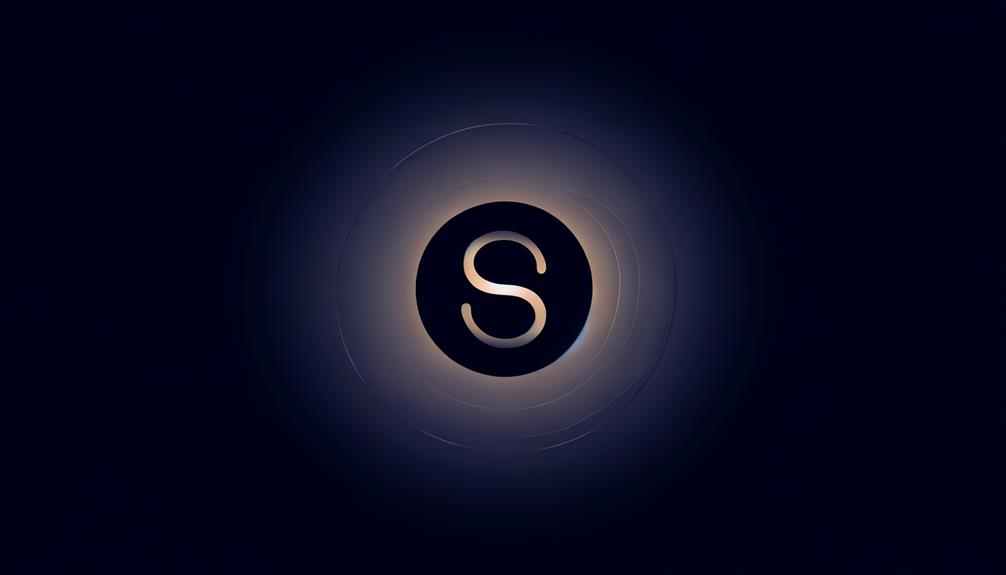
Key Takeaways
- The "S" in a circle symbol designates a registered service mark.
- It signifies official registration with relevant authorities and confers exclusive rights to the service provider.
- The symbol is used to indicate the authenticity and quality of a service.
- It is distinct from a trademark, which applies to tangible products.
- Misusing the symbol can lead to legal misunderstandings and improper assumptions.
Origin of the Symbol
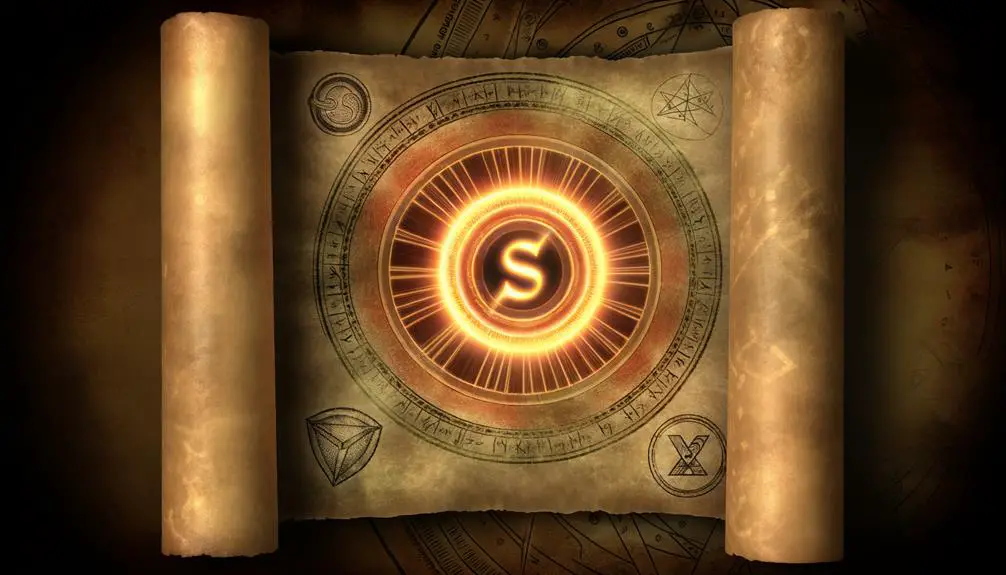
The origin of the 'S in a Circle' symbol can be traced back to the early 20th century when it first emerged as a mark of quality and authenticity in various industries. This emblem was initially adopted by manufacturers to signify that their products adhered to a set of rigorous standards and had undergone thorough inspections.
Over time, the symbol gained widespread recognition and trust among consumers, becoming synonymous with reliability and excellence. Its application ranged from food and beverage sectors to consumer goods and electronics. The adoption of this symbol reflected a growing emphasis on consumer protection and product integrity, serving as a visual guarantee of superior quality.
Consequently, it played a pivotal role in shaping consumer expectations and industry practices.
Legal Definition
Understanding the legal definition of the 'S in a Circle' symbol is crucial to grasp its full significance and the protections it affords.
Legally, the 'S in a Circle' symbol (Ⓢ) designates a registered service mark, signifying that the mark has been officially registered with the relevant governmental authority, typically the United States Patent and Trademark Office (USPTO).
This registration confers exclusive rights to the service provider, allowing them to prevent unauthorized use of the mark in connection with similar services.
Moreover, it provides legal recourse for infringement and enhances the credibility and recognition of the service provided.
The stringent legal framework surrounding the 'S in a Circle' guarantees robust protection and enforcement of service mark rights.
Trademark Vs. Service Mark
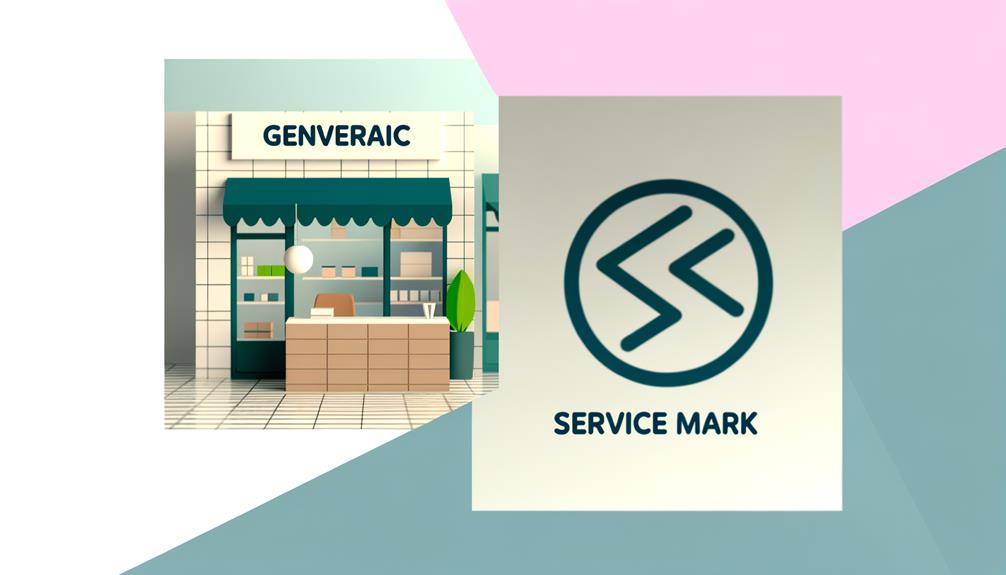
Distinguishing between a trademark and a service mark is important for understanding the different types of intellectual property protections available for brands and services. A trademark is generally used to identify and distinguish products or goods of one entity from those of others in the marketplace. It typically involves symbols, logos, or names associated with tangible products.
Conversely, a service mark performs a similar function but applies to services rather than physical goods. Service marks protect the branding of services offered by a company, ensuring that customers can identify the source of a particular service. Both serve vital roles in brand identity and consumer trust, but their application varies based on the nature of what is being marketed.
Registration Process
Registering a trademark or service mark involves a thorough process that guarantees legal protection and exclusive rights to the brand or service. This process begins with a comprehensive exploration to confirm no existing marks conflict with the proposed one. Following this, an application is filed with the relevant intellectual property office, accompanied by detailed explanations and classifications of the goods or services. The application undergoes an evaluation to assess compliance with legal standards. Upon passing this evaluation, the mark is published for opposition, allowing third parties to contest its registration. If no opposition is filed, the mark proceeds to registration, conferring exclusive usage rights to the registrant.
| Step | Description | Outcome |
|---|---|---|
| Search | Check for existing conflicts | Confirm uniqueness |
| Application | File with detailed explanations | Formal entry for assessment |
| Examination | Assess compliance with legal standards | Approval or refusal |
| Opposition | Third parties can contest the mark | Possible legal challenges |
| Registration | Finalize and register the mark | Exclusive rights granted |
Benefits of Using the Symbol

The use of the 'S in a circle' symbol provides significant advantages, including its function as a recognizable branding tool that can enhance market presence.
Moreover, it serves as a critical legal protection indicator, signaling registered service marks and deterring potential infringements.
In addition, the symbol contributes to an enhanced professional image, establishing trust and credibility with clients and stakeholders.
Recognizable Branding Tool
Utilizing the 'S in a Circle' symbol offers businesses a powerful and recognizable branding tool that enhances brand visibility and consumer trust. This symbol serves as a visual shorthand, instantly identifying a company's products or services.
Its simplicity and distinctiveness guarantee that it is easily remembered and recognized by consumers, which is vital in today's competitive markets. The 'S in a Circle' symbol communicates professionalism and stability, reinforcing a positive perception of the brand.
When consistently applied, it becomes synonymous with the quality and reliability of the brand it represents. Consequently, this symbol plays a pivotal role in differentiating a business from its competitors, fostering brand loyalty, and securing long-term customer engagement.
Legal Protection Indicator
Incorporating the 'S in a Circle' symbol serves as a strategic legal protection indicator, providing businesses with a tangible mechanism to assert and safeguard their trademark rights. This symbol communicates to competitors and consumers alike that the trademark is legally registered, offering several key benefits:
- Deterrence: Dissuades potential infringers by signaling registered trademark status.
- Legal Recourse: Facilitates legal action against unauthorized use more efficiently.
- Enhanced Enforcement: Strengthens the ability to enforce trademark rights globally.
- Consumer Trust: Bolsters consumer confidence by ensuring authenticity.
- Brand Integrity: Maintains the distinctive character of the trademark, preventing dilution.
Utilizing the 'S in a Circle' symbol is an indispensable aspect of a strong intellectual property strategy, ensuring thorough legal protection.
Enhanced Professional Image
Moreover, the 'S in a Circle' symbol greatly enhances a company's professional image by demonstrating a commitment to legal compliance and intellectual property management.
This symbol serves as a visible assurance to clients, partners, and competitors that the company adheres to stringent regulatory standards. By prominently displaying this symbol, businesses convey a sense of trustworthiness and reliability, which is vital in building and maintaining professional relationships.
In addition, the symbol underscores the company's dedication to protecting its proprietary assets, thereby instilling confidence in stakeholders regarding the organization's operational integrity.
Ultimately, the 'S in a Circle' symbol not only fortifies the company's legal standing but also notably elevates its stature within the industry.
Common Misconceptions
Common misconceptions regarding the 'S in a circle' symbol frequently arise, often confusing it with trademarks, copyrights, or registered symbols.
It is important to distinguish that the 'S in a circle' does not confer any legal protection or proprietary rights.
Understanding these distinctions is essential for accurate usage and compliance with intellectual property laws.
Not a Trademark
Contrary to popular belief, the 'S in a circle' symbol does not denote a registered trademark. This misconception often arises due to the resemblance of the symbol to commonly recognized trademark symbols. However, the 'S in a circle' has an entirely different meaning and should not be conflated with intellectual property designations.
To clarify further, consider the following points:
- Trademark Symbols: Registered trademarks typically use ® or ™ symbols.
- Legal Implications: Misusing the 'S in a circle' symbol could lead to legal misunderstandings.
- Symbol Function: The 'S in a circle' serves a unique, non-trademark purpose.
- Common Misuse: Incorrect attribution can cause confusion in legal and business contexts.
- Consumer Misunderstanding: Educating users about correct symbol usage is essential.
Understanding these distinctions is vital for proper symbol application.
Not a Copyright
The 'S enclosed by a circle' symbol also does not indicate copyright protection, which is another common misconception. Copyright protection is indicated by the © symbol, representing the exclusive legal rights granted to the creator of original works.
The confusion often arises due to the visual similarity between the two symbols. However, the 'S enclosed by a circle' symbol is actually used to indicate sound recording copyright, represented by the ℗ symbol. This distinction is essential for legal and practical purposes.
Understanding these differences ensures proper identification and use of legal protections for intellectual property. Misinterpreting the 'S enclosed by a circle' symbol can lead to improper legal assumptions and infringe on the rights associated with actual copyright-protected works.
Not a Registered Symbol
Despite common beliefs, the 'S enclosed by a circle' symbol is not a registered trademark symbol. This misconception often leads to confusion among individuals and businesses. Understanding the correct usage and meaning of various symbols is essential for legal and branding purposes.
Common misunderstandings about the 'S in a circle' symbol include:
- Trademark Misidentification: Mistaking it for a registered trademark symbol (®).
- Copyright Confusion: Erroneously associating it with copyright protection (©).
- Legal Misunderstanding: Believing it offers legal protection similar to other recognized symbols.
- Branding Errors: Incorrectly using it in marketing materials, leading to potential legal issues.
- Public Misinterpretation: General public misunderstanding its true significance, causing widespread misinformation.
Clarifying these points helps prevent misuse and guarantees proper symbol application.
International Recognition
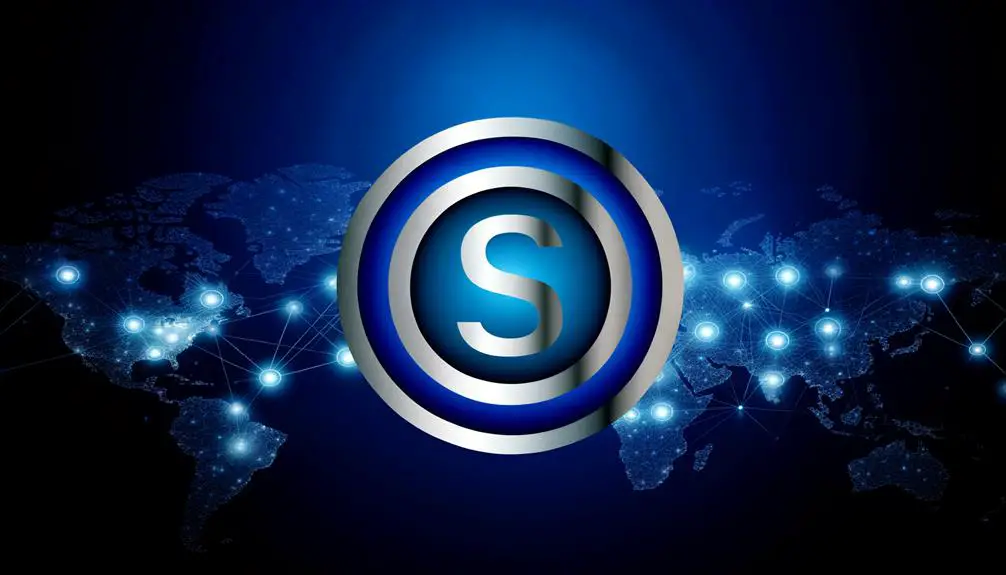
Widely acknowledged across various countries, the 'S in a Circle' symbol holds significant international recognition for its role in indicating compliance with specific safety and quality standards. This emblem serves as a universal marker that transcends linguistic and regional boundaries, ensuring that products and services meet stringent criteria for consumer protection. The proliferation of this symbol underscores a global commitment to maintaining high standards, fostering trust, and promoting fair trade practices.
| Country | Recognized By | Certification Type |
|---|---|---|
| Germany | TÜV Rheinland | Safety |
| Japan | JIS (Japanese Industrial Standards) | Quality |
| United States | ANSI (American National Standards Institute) | Compliance |
Such widespread acceptance reinforces the symbol's authority, making it a cornerstone in international commerce and safety assurance.
Protecting Your Service Mark
Safeguarding the protection of your service mark is crucial to maintaining its exclusivity and safeguarding your brand's identity in the marketplace. To achieve this, consider the following essential steps:
- Register Your Service Mark: Official registration with the appropriate governmental body provides legal recognition and protection.
- Monitor for Infringement: Regularly search for unauthorized use of your service mark to prevent dilution and confusion.
- Enforce Your Rights: Take legal action against entities that infringe upon your mark to uphold its integrity.
- Renewal of Registration: Keep track of renewal deadlines to guarantee continuous protection.
- Educate Your Team: Make sure that your business and legal teams understand the importance and guidelines for proper usage.
These measures are crucial for maintaining the strength and value of your service mark.
Consequences of Misuse

Misuse of a service mark can lead to significant legal repercussions and damage to a brand's reputation. Unauthorized use of a service mark may result in litigation, including injunctions and monetary damages. Such misuse can also dilute the distinctiveness of the service mark, undermining its value and leading to consumer confusion. This not only compromises brand integrity but also erodes consumer trust.
Additionally, intentional infringement can result in punitive damages, exacerbating financial liabilities. Companies must rigorously enforce their service mark rights to prevent unauthorized use and preserve brand equity. Failure to do so may result in long-term negative consequences, including loss of market position and increased vulnerability to competitors.
Diligence in protecting service marks is crucial.
Examples in Business
Many businesses across various industries utilize service marks to distinguish their services and maintain a competitive edge in the market. The 'S in a circle' symbol is a prevalent representation of service marks, exemplifying their importance in brand recognition and legal protection.
Below are some notable examples:
- Consulting Firms: Service marks ensure unique branding for specialized advisory services.
- Hospitality Industry: Hotels and resorts employ these symbols to signify exclusive customer service.
- Technology Companies: IT firms use service marks to safeguard and promote their software services.
- Healthcare Providers: Clinics and hospitals use service marks to establish trust and reliability.
- Financial Services: Banks and financial institutions mark their advisory and investment services.
These examples illustrate the strategic application of service marks in various business sectors.
Future of the Symbol
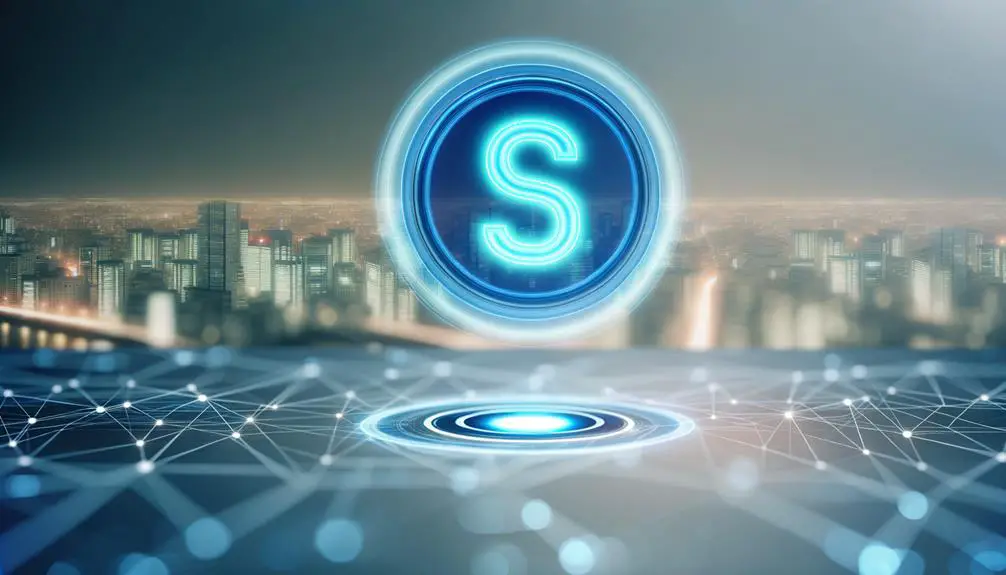
The future of the S in a circle symbol is poised for significant transformation, driven by technological integration expansions and global recognition trends.
As digital platforms increasingly incorporate such symbols for streamlined navigation and branding, their ubiquity is set to rise.
Concurrently, international adoption will further solidify the symbol's universal recognizability, enhancing its relevance across diverse markets.
Technological Integration Expansions
As technological advancements continue to evolve, the integration of the 'S in a Circle' symbol is poised to expand its utility across various digital platforms and smart technologies. This symbol, traditionally associated with services and support, will likely see enhanced functionality in the digital domain.
Key areas of technological integration include:
- Mobile Applications: Seamless in-app support and service request features.
- Smart Devices: Quick access to troubleshooting and customer service.
- Augmented Reality (AR): Interactive service guides and real-time support.
- IoT Devices: Synchronization for device management and user assistance.
- AI Chatbots: Automated customer service and support solutions.
These integrations will guarantee the symbol remains relevant, providing users with instant access to essential services and support, thereby enhancing overall user experience.
Global Recognition Trends
Building on its expanding technological integrations, the 'S in a Circle' symbol is poised to achieve global recognition, becoming a universal emblem for service and support across diverse industries. This growth trajectory is fueled by its adoption in digital platforms, customer service interfaces, and automated assistance technologies.
As businesses increasingly prioritize user experience, the symbol provides a standardized visual cue that signifies reliability and assistance. In addition, its simplicity and versatility enable seamless integration into global branding strategies, transcending linguistic and cultural barriers.
With the proliferation of interconnected devices and the internet of things (IoT), the 'S in a Circle' symbol is expected to cement its place as an indispensable icon in the global lexicon of service and support.
Conclusion
In summation, the 's in a circle' symbol holds significant import in the domain of intellectual property, delineating service marks from trademarks.
It facilitates legal protection, guarantees brand differentiation, and fortifies market presence.
Adherence to proper registration and usage procedures is paramount to reap its benefits and evade legal repercussions.
As businesses increasingly recognize its value, the symbol's prominence is bound to rise, cementing its role as an indispensable tool in safeguarding service-related brand identities.





